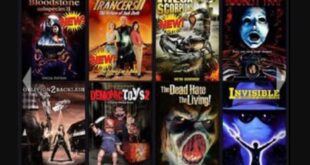This article follows three fundamental questions: What makes special effects in media good? What makes them bad? Also, what makes some effects so bad that they’re good? To help answer the questions, I’m going to analyze two scenes from two very different movies: (1) Birdemic: Shock and Terror (usually considered one of the worst movies ever) and (2) The Host (often considered a modern classic monster movie).
The differences between the scenes are almost monumental.
Birdemic: Shock and Terror
Birdemic’s birds — the poor things — are not only fake looking and unrealistic, but they are almost stationary. They basically just fly in place, hovering above their “victims” and looking like really bad photoshop jobs. In fact, it’s hardly an exaggeration to say most people watching Birdemic could create better bird attack scenes.
The question is: Is this just a bad thing, or is it so bad it’s good? It is a frustrating question in some ways, because the answer is a bit subjective. However, it should be said that Birdemic has become a notable film for this very reason, which means those behind it (including the actors) exploited a weakness in the human heart. Certainly, some would say it’s a mental weakness as well, but there is something charming about scenes like these, just as there is something to the Sharknado franchise.
My personal opinion is that, when push comes to shove, making an intentionally bad movie with lousy effects will always have an appeal. Ultimately, it seems that anyone could do this shit, which keeps the movie perpetually at a democratic level. There’s nothing wrong with that, so long as you can tolerate it, make fun of it and remember it for what it is.
Yes, the birds may look cheesier than Chester Cheetah, but they are a gift that keeps on giving, like a French fry you find under a couch cushion that you thought you lost. You may just eat that sucker anyway. Someone may just watch this kind of schlock, too. In fact, it’s interesting to note that, by Rotten Tomatoes score standards, Birdemic: Shock and Terror actually has a higher rating (19%) than this year’s Winchester (12%). That’s quite a difference and indicates how cheesiness can have an endearing, highly memorable quality. Now let’s look at a movie with a 93% Rotten Tomatoes score, shall we?
The Host
In stark contrast with Birdemic is Bong Joon-ho’s The Host. This is a movie for virtually any sci-fi/horror monster movie fan, and much of its success is due to its special effects. Yes, there is a story line here, including a family’s journey and definite social commentary, but all of that is strengthened by a memorable creature depicted in a compelling and convincing way.
In my opinion, there is scarcely a moment where the fish monster looks fake. Designed by Chin Wei-chen, it’s a skillful blend of animatronics and CG. Much of the monster’s movement looks realistic, and it seems they were mindful of its limitations to make it believable. On top of that, the creature often appears in daylight, unlike many horror films which rely on darkness to make something look scarier (and ostensibly to hide defects in creature and makeup design).
It seems that, in order to make a monster look its best, special attention must be paid to light and shade, and making something appear plausible. In The Host, the monster almost seems like something real that could appear on Jeremy Wade’s River Monsters on Animal Planet. In fact, the director was inspired by an actual deformed fish caught in the Han River — an example of art imitating life.
Final Analysis
I find myself in a unique position. I can enjoy movies with really bad special effects, yet I fully respect well done effects, too. At the same time, some movies are somewhere in between the extremes, either due to budget restrictions or they were rushed through certain aspects.
At the end of the day, The Host is definitely the superior movie all around, but I guarantee you Birdemic will receive just as much attention because many people secretly enjoy badly made horror films. It is part of the gamble of committing to a project, either as a creator or a viewer. Some things will be a pleasant surprise and almost command respect, while others mostly lead to groans and guffaws. Either way, if they cause some sort of reaction, they have merit. Effects can make or a break a movie, and sometimes are integral to a story. That’s one of the weird things about what we watch.
 PopHorror Let's Get Scared
PopHorror Let's Get Scared




